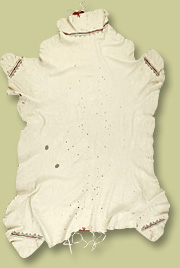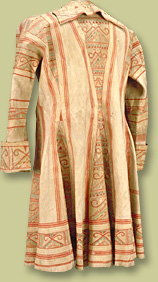|
|
Arrival of Strangers - The Last 500 YearsBeliefsThe Innu Land, Nitassinan, and the Innu Drum"I enjoy playing the teuaikan, to honour the Numushum who sing with the sacred drum. I do not pretend to have as great a presence as they do, or the dignity they possess, but I play the teuaikan to continue honouring them. It is important for me to sing the songs my uncles and grandfathers sang because it helps me believe in the future and makes me proud of being Innu." - Lucien-Gabriel Jourdain, Innu singer from Uashat, 2001 [translation] The Innu drum illustrates the continuing special relationship between the Innu hunter/shaman and the caribou. Innu Elders relate how the hunter/shaman dreams of the caribou, plays the teuaikan, or drum, and sings until he has received a message from the caribou that it is ready to offer itself to the people. The hunter/shaman then instructs the hunters where to hunt. When the hunters bring the caribou back, the meat is prepared for a feast called a makusham. All of the members of the community dance, drum and sing around the food prepared for the occasion. The women imitate the caribou while the men, as hunters, follow them around in a circle dance. Elders and children join in the makusham to pay homage and respect to the caribou and other living beings for providing them with the necessities of life. This enduring relationship between Innu and caribou inspires contemporary artists among the Innu. |

